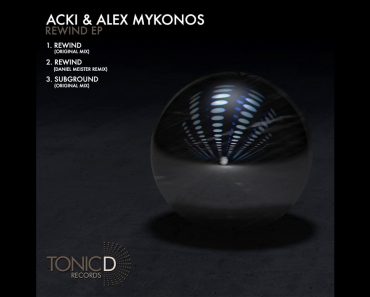In a way, Fryderyk Chopin is now the patron of rediscovering old, often forgotten masters of music and reviving their works by editing them and making them widely available.
.Polish music is an important and valuable part of the European and world cultural heritage. The historical picture of Polish music (broadly defined as music created and performed in Poland, even if written by foreign composers) is still somewhat blurred and incomplete. This is due to prevailing research gaps in certain areas of musical life, coupled with the inaccessibility of many important sources.
Music history research relies on musical sources, which provide the basis for analysing individual composers as well as broader stylistic changes and the circulation of musical works between various cultural centres. Musical scores, librettos and theoretical works, along with documents like monastery or court account books, reveal details not only about the music itself but also about its composers and performers. Unfortunately, the state of Polish archive preservation reflects, one might say, our turbulent history.
The archives suffered depletion not only during the Second World War but also as a consequence of subsequent partitions and – going back further – the Swedish Deluge. The annexations also presented a missed opportunity for Poland, while other nations could focus on discovering and nurturing traces of their musical past. At the end of the 19th century, the famous Denkmäler der Tonkunst in Österreich series was created and continues today, publishing works by composers associated with Austria from the Renaissance, Baroque and Classical eras. One can only imagine how many musical treasures might have survived to this day if a society analogous to the Bach-Gesellschaft had been established in Poland in the mid-19th century to edit the works of the old masters. Polish musicology has long held the view that the 18th century (especially the first half) was a passive and dilettantish musical period in Poland.
Currently, however, the knowledge of the musical production of that time (including that of Polish composers) is expanding significantly. This achievement is the direct result of research and analysis of sources, many of which – despite the serious losses noted above – are still found in state archives, libraries, monasteries and church collections. Music was an essential part of life for our ancestors. When the Jesuits (today rightly associated with their important contribution to musical culture, among other things) began their activities in the First Republic, the rules of the congregation tended to restrict the role of music. A document addressed by the Polish congregation to the order’s authorities at the end of the 16th century reads: ‘We need a provincial dispensation from the rules on singing and music. For in Poland, people find the lack of singing inconceivable and will not frequent places filled with silence.’
Musical performance thrived at courts, particularly those of royalty and magnates, as well as in cathedrals and monasteries; cities paid for the upkeep of the musicians and, sometimes, generous funding (e.g. legacies) enabled even smaller parishes to maintain musical ensembles. The multinational society of the Polish-Lithuanian Commonwealth fostered an intensive exchange of repertoire between different centres, and foreign musicians employed by the kings (e.g. the numerous Italians at the court of the Vasa dynasty) profoundly impacted musical tastes and the resultant compositions created under the Sarmatian sun. The first significant setback occurred in the mid-17th century, after the Swedish Deluge: the Polish-Lithuanian Commonwealth, unable to regain its former strength, suffered irreparable losses to its material and cultural heritage, in some respects perhaps even surpassing the future damage inflicted during the Second World War. Poland’s harsh past, as well as the ongoing war on our borders, prompts us to reflect on the efficient ways to preserve the remains of our musical heritage. At present, the optimal method for safeguarding archival musical resources appears to be the digitisation, replication of the digital copies, systematic organisation and widespread distribution.
Digitisation and Research
.For several years, the Fryderyk Chopin Institute has been implementing EU-funded projects aimed at preserving as much of Poland’s musical heritage as possible by digitising it and increasing its accessibility. The work started, of course, with the digitisation of Chopin’s legacy, which is at the heart of the Institute’s research interests. It soon became clear, however, that there was a great need to go beyond the immediate Chopin context, given that even sources of monumental importance to Polish musical culture were difficult to access. This gave rise to the Heritage of Polish Music in Open Access project, which has digitised and made available over 25,000 artefacts related to Polish musical life (mainly scores, but also musical literature and other materials). The compiled resources included several collections crucial to the study of Polish music history. Noteworthy collections include those of the Warsaw Music Society, the Czartoryski Library in Kraków, the Gdańsk Library of the Polish Academy of Sciences and the exceptionally rich and valuable archives of Jasna Góra and Wawel Cathedral Chapter. These are just a few of the many resources available through the Chopin Institute’s projects.
The Institute’s digitisation initiatives are part of a broader, comprehensive plan to create a database of Polish music sources, transcriptions and related knowledge. We can point to three key components of this undertaking. First and foremost, it provides a knowledge base about Polish composers and their works, which has been consistently built up over the years in the form of the Polish Music Portal. (https://portalmuzykipolskiej.pl/en). The portal gathers biographical information, analyses of the artists’ creative outputs and details of surviving sources and works – all in one place. It is closely tied to the music source repository (https://polish.musicsources.pl/en), which allows users to view and download digitised items and learn more about their physical versions. It is possible thanks to the metadata associated with each score, systematically recorded in the international music database RISM (Répertoire International des Sources Musicales).
This is particularly important for several reasons. The RISM database, which has been developing since the 1950s, is the main repository of information for researchers on musical sources, their location, dating, authorship, etc. Providing this information for Polish sources facilitates the dissemination of Polish music collections to a wider, international community of researchers, musicians and music lovers. It also offers great opportunities for gaining knowledge. A clear example is the problem of investigating the authorship of anonymous works. A large proportion of the musical documents held in the archives and libraries are manuscripts (and sometimes prints) donated without any reference to the author of the work.
Along with the physical source’s description, dating, and content, RISM also includes musical incipits – brief excerpts from the note sheet. Comparing these incipits often allows researchers to identify the author, who may be anonymous in one collection but attributed in another. This is just one of the many possibilities offered by digitising musical sources and attaching metadata to digital copies. Finally, the third element that complements the knowledge portal and the source repository is the database of digital transcriptions – a particularly innovative tool with enormous potential not only for researchers and specialists but also for musicians and music lovers.
Digital transcriptions are contemporary editions of musical sources. A team of editors working at the Chopin Institute has produced more than 7,000 such editions over the past three years. These transcriptions, employing specialised symbolic notations, represent manuscripts and printed music, often difficult to read today, either because of the musical notation used in the past or because of the poor state of preservation. The full scores are available at https://polishscores.org/, which also has an advanced search function that allows you to browse by title, composer, text (for vocal or vocal-instrumental pieces) and melody. This is an unparalleled aid for musicologists and a priceless source of information and inspiration for musicians. Hopefully, it will encourage performers to explore more repertoire created by Polish artists or on Polish soil.
A Glimpse Into the Future
.The digital tools developed by the Chopin Institute for researching and sharing musical resources are receiving increasing attention and recognition abroad. This is incredibly rewarding, as it gives us hope of catching up with the backlog of work on our musical heritage caused by our difficult history. It will also undoubtedly result in a greater appreciation for our musical culture in the future. Developing such a large digital resource also opens us up to completely new areas of research, with the use of artificial intelligence tools and big data. The next necessary steps (already planned at the Chopin Institute) involve expanding existing databases and repositories with further collections (extensive nationwide searches are being conducted to find more sources), but also to create new tools. This could include 3D digitisation of historical musical instruments or sampling them, that is, recording sound for later use in digital instruments. Which pianist wouldn’t want to play an instrument at home that sounds like, say, a Chopin piano? Such digital instruments may still be imperfect, but given the extraordinary pace at which the high-tech world is developing, it is safe to assume that digital instruments will continue to sound better and better.
.Chopin is not only our most outstanding composer. Today, he is also a figure who, in a way, promotes the rediscovery of old, often forgotten masters of music and reviving their works by editing them and making them widely available.
This content is protected by copyright. Any further distribution without the authors permission is forbidden. 27/03/2025







